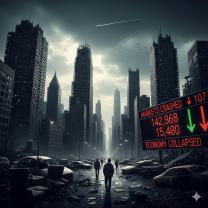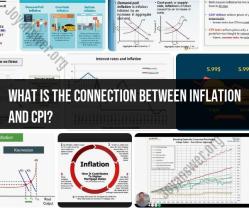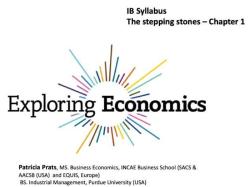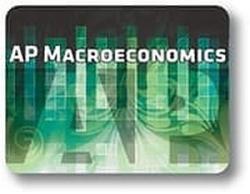What is meant by consumer goods?
Consumer goods refer to tangible products that are purchased and used by individuals and households to satisfy their personal needs and wants. These goods are the end result of the production process and are intended for direct consumption or use by the end consumer. Consumer goods can be further categorized into different types based on their characteristics and how consumers use them. Here are some common categories of consumer goods:
Durable Goods: Durable consumer goods are long-lasting products that are used over an extended period. Examples include appliances (e.g., refrigerators, washing machines), electronics (e.g., televisions, smartphones), furniture, and automobiles.
Non-Durable Goods: Non-durable consumer goods, also known as consumables, are items that are used up relatively quickly or have a short lifespan. Examples include food, beverages, toiletries, and cleaning products.
Fast-Moving Consumer Goods (FMCG): FMCG are non-durable goods that have a high turnover rate and are typically sold at a relatively low cost. They include items like snacks, beverages, personal care products, and cleaning supplies.
Luxury Goods: Luxury consumer goods are high-end, often expensive products that are not considered necessities but are purchased for their perceived quality, prestige, and exclusivity. Examples include designer clothing, luxury watches, and high-end automobiles.
Convenience Goods: Convenience goods are consumer products that are readily available and purchased frequently with minimal effort. These are everyday items like milk, bread, and newspapers that consumers often buy without much consideration.
Shopping Goods: Shopping goods are products that consumers research and compare before making a purchase decision. These include items like clothing, electronics, and appliances, where consumers may consider various options and features.
Specialty Goods: Specialty consumer goods are unique or specific products that cater to niche markets and have a dedicated customer base. Examples include artisanal foods, collectibles, and custom-made jewelry.
Impulse Goods: Impulse goods are items that consumers purchase on the spur of the moment without much prior planning or consideration. These are often displayed near checkout counters and include items like candy, magazines, and small gadgets.
Private Label or Store Brand Goods: These are consumer goods that are produced and sold under a retailer's own brand name. They are often less expensive than nationally recognized brands but may offer similar quality.
Consumer goods play a significant role in the economy, and their demand is influenced by various factors, including consumer preferences, income levels, advertising, and economic conditions. Businesses that produce and sell consumer goods must understand consumer behavior and market trends to meet the evolving needs and preferences of their target audiences.
Understanding Consumer Goods: What They Are and Why They Matter
Consumer goods are products that are purchased and used by consumers for their personal consumption or enjoyment. They can be divided into three main categories: durable goods, nondurable goods, and services.
- Durable goods: Durable goods are products that have a lifespan of more than three years. Examples of durable goods include cars, appliances, and furniture.
- Nondurable goods: Nondurable goods are products that have a lifespan of less than three years. Examples of nondurable goods include food, clothing, and gasoline.
- Services: Services are intangible products that are produced and consumed simultaneously. Examples of services include haircuts, medical care, and financial services.
Consumer goods are important because they meet the basic needs and wants of consumers. They also play a vital role in the economy by providing jobs and generating revenue for businesses.
Types and Examples of Consumer Goods in Everyday Life
Here are some examples of consumer goods that are commonly used in everyday life:
- Durable goods: Cars, appliances, furniture, computers, smartphones, televisions, tools, sporting goods, toys, and jewelry
- Nondurable goods: Food, beverages, clothing, footwear, toiletries, cleaning supplies, office supplies, and pet supplies
- Services: Transportation, healthcare, education, financial services, telecommunications, entertainment, and hospitality
The Impact of Consumer Goods on the Economy and Society
Consumer goods have a significant impact on the economy and society. The production and consumption of consumer goods drives economic growth and creates jobs. Consumer goods also play a role in shaping consumer culture and values.
For example, the rise of the automobile in the 20th century had a major impact on the economy and society. The automobile industry created millions of jobs and transformed the way people live and work. The automobile also made it possible for people to travel more easily and to live in more remote areas.
Consumer goods also have a social and environmental impact. For example, the production of consumer goods can lead to pollution and resource depletion. Consumers also play a role in waste production and disposal.
It is important to be mindful of the impact of consumer goods on the economy, society, and the environment. Consumers can make a difference by choosing to buy sustainable products and services, and by reducing their consumption of consumer goods.
Here are some tips for reducing your consumption of consumer goods:
- Buy less, buy better. Instead of buying cheap, low-quality products that will quickly need to be replaced, invest in higher-quality products that will last longer.
- Repair instead of replace. If something breaks, try to repair it instead of throwing it away.
- Borrow or rent instead of buy. If you only need something for a short period of time, consider borrowing or renting it instead of buying it.
- Buy used. There are many great used products available for purchase, both online and in stores.
- Recycle and compost. When you are done with something, recycle or compost it if possible.
By following these tips, you can reduce your consumption of consumer goods and help to protect the environment.













